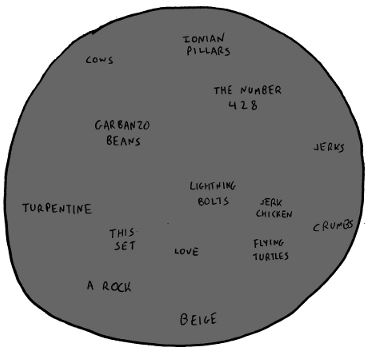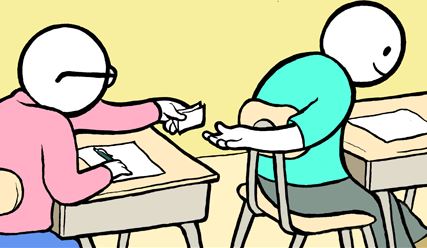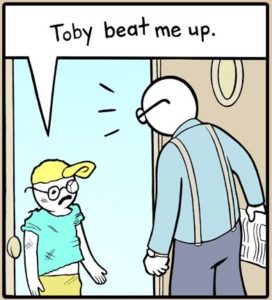@DataGenetics did a nice piece on Lychrel Numbers – https://t.co/4MCoRFXogC. I wonder how they differ in non-decimal bases?
Blog
The Magician
This article is a repost promoting content originally published elsewhere. See more things Dan's reposted.
Review of Hacknet
This review originally appeared on Steam. See more reviews by Dan.
I’ve been a huge fan of the “hacker game” ever since I first played 1985’s Hacker on my Amstrad CPC: I’m pretty hardened to the genre, and I can confidently say that not since Uplink has anything broken through my firewall like Hacknet did. If you’re looking for an easy-to-pick up and compelling puzzle game in a cyberpunk theme, it’s a clear winner: I got 6 hours of thoroughly enjoyable playtime out of it, and I’m sure I’ll go back and get the same again when I find the chance to go and explore deeper.
Twee2 – Interactive Fiction Authoring for Geeks
There’s a wonderful tool for making web-based “choose your own adventure”-type games, called Twine. One of the best things about it is that it’s so accessible: if you wanted to, you could be underway writing your first ever story with it in about 5 minutes from now, without installing anything at all, and when it was done you could publish it on the web and it would just work.

But the problem with Twine is that, in its latest and best versions, you’re trapped into using the Twine IDE. The Twine IDE is an easy-to-use, highly visual, ‘drag-and-drop’ interface for making interactive stories. Which is probably great if you’re into IDEs or if you don’t “know better”… but for those of us who prefer to do our writing in a nice clean, empty text editor like Sublime or TextMate or to script/automate our builds, it’s just frustrating to lose access to the tools we love. Plus, highly-visual IDEs make it notoriously hard to collaborate with other authors on the same work without simply passing it back and forwards between you: unless they’ve been built with this goal in mind, you generally can’t have two people working in the same file at the same time.
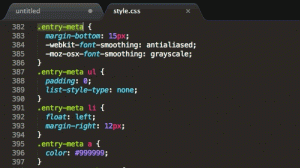
Earlier versions of Twine had a command-line tool called Twee that perfectly filled this gap. But the shiny new versions don’t. That’s where I came in.
In that way that people who know me are probably used to by now, I was very-slightly unsatisfied with one aspect of an otherwise fantastic product and decided that the correct course of action was to reimplement it myself. So that’s how, a few weeks ago, I came to release Twee2.

If you’re interested in writing your own “Choose Your Own Adventure”-type interactive fiction, whether for the world or just for friends, but you find user-friendly IDEs like Twine limiting (or you just prefer a good old-fashioned text editor), then give Twee2 a go. I’ve written a simple 2-minute tutorial to get you started, it works on Windows, MacOS, Linux, and just-about everything else, and it’s completely open-source if you’d like to expand or change it yourself.
(there are further discussions about the concept and my tool on Reddit here, here, here and here, and on the Twinery forums here, here and here)
The Set of All Things
This article is a repost promoting content originally published elsewhere. See more things Dan's reposted.
Note #7341
@misterjta, @fleeblewidget and I ALL thought it was our turn to order wine. 40 bottles just turned up. #whoopsdrunk http://t.co/5cxomwaEvg
Dan Q posted a note for GC54F7N Oxford Steganography #4 – Tilt
This checkin to GC54F7N Oxford Steganography #4 - Tilt reflects a geocaching.com log entry. See more of Dan's cache logs.
This is definitely now inaccessible and has been muggled. I’m scouting for a new location for this cache, but in the meantime, anybody who wants to complete the series can send me a private message stating the co-ordinates of this cache and I’ll provide them with the secret code from within it: that way – so long as you’ve found #1, #2, and #3 – you can still eventually find #5!
Thanks for your patience, and happy ‘caching!
Into the Lair of the Bladder Monster
Warning: this blog post contains pictures of urine, invasive equipment, and the inside of a bladder. It’s probably safe for all audiences, but you might like to put your glass of apple juice down for a minute or two. The short of it all is that I’m probably healthy.
Since my hospitalisation the other month with a renal system infection, I’ve undergone a series of investigations to try to determine if there’s an underlying reason that I fell ill. As my doctor explained to me, it’s quite possible that what I’d experienced was a random opportunistic infection (perhaps aided by a course of unrelated antibiotics I’d been on earlier this year or by certain lifestyle habits), but if that wasn’t the case – if there were some deeper explanation for my health problems – it was important to find out sooner, rather than later.
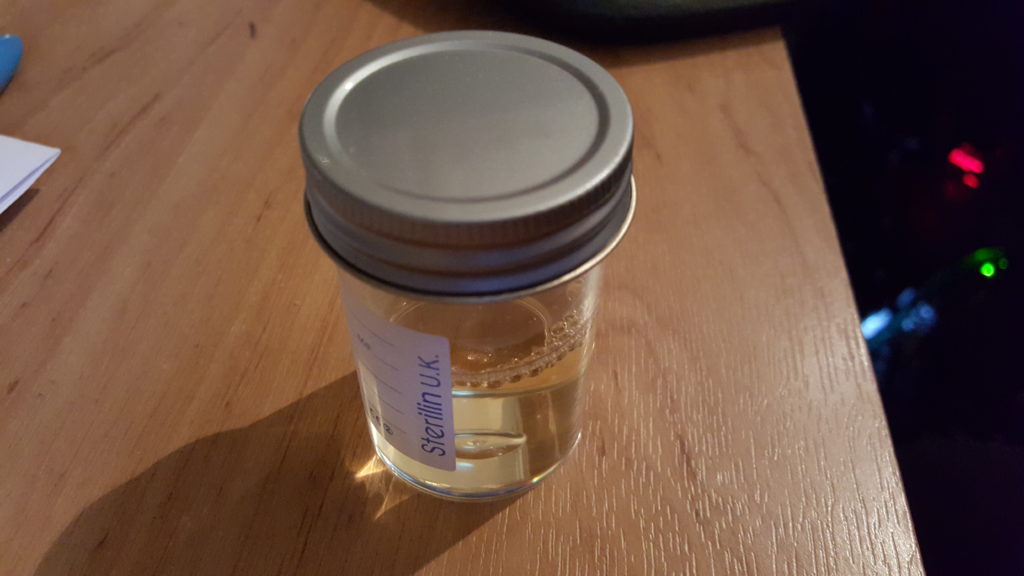
Early on I had several ultrasound scans of my bladder (at a number of different times and at a variety of levels of fullness) and one of my kidneys, the latter of which revealed some “minor scarring” of one of them which apparently isn’t something I should be worried about… although I wish they’d started the two-page letter I got with that rather than opening with, effectively, “Contrary to what we told you at the hospital, we did later see something wrong with you…” But still, good to be reassured that this is probably not an issue.
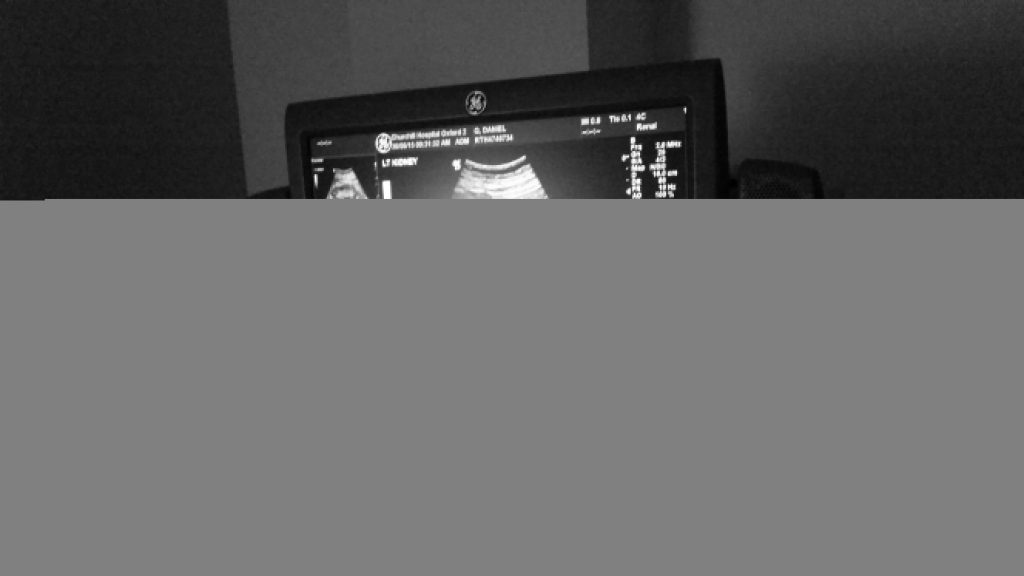
More recently, I went to the hospital to have a “flow rate test” and a cystoscopy. The flow rate test involved the most-ghetto looking piece of NHS equipment I’ve ever seen: functionally, it seemed to be little more than a funnel on top of a large measuring beaker, in turn on top of a pressure-sensitive digital scale. The scale was connected up to the only fancy-looking bit of equipment in the room, a graphing printer that output the calculated volume (based on their weight) of the same and, more-importantly, the rate of change: the “flow rate” of the stream of urine.
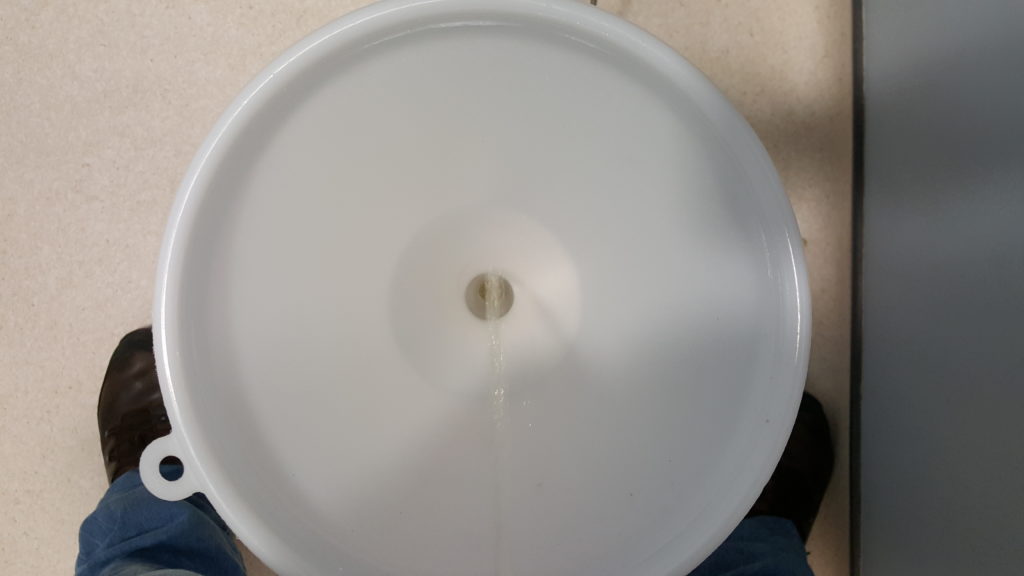
I suppose one advantage of using equipment like this is that it basically operates itself. Which meant that the nurse was able to give me five seconds worth of instruction and then leave the room, which saved us from our own Britishness forcing us to make small-talk while I urinated in front of her or something. Ultimately, I turned out to be within the range of normalcy here, too, although I was a little disappointed to find that the ward didn’t maintain a daily “score board” of flow rates, as sort-of a science-backed literal pissing contest.
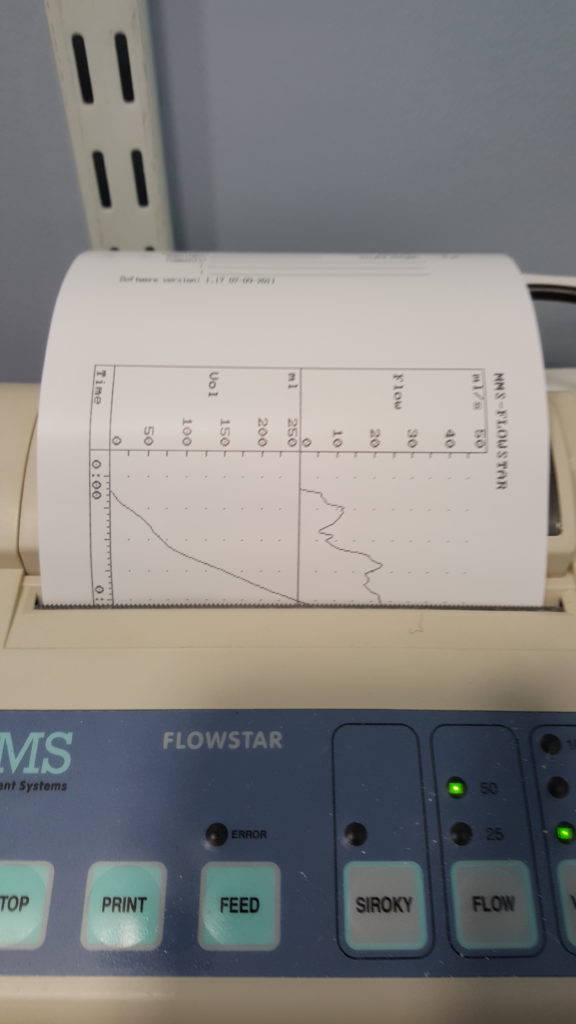
Finally came the cystoscopy, and this was the bit that I’d been most-nervous about. This procedure involves the insertion of a long flexible tube into the urethra at the tip of the penis, under local anasthetic, and pushing it all the way down, through the sphincter, down through the prostate and then back up into the bladder. It’s then used as a channel to pump water into the bladder, filling it to capacity and stretching out the sides, after which the fibreoptic cord (and light) that runs along its length is used to look around inside the bladder to inspect for any of a plethora of different problems.
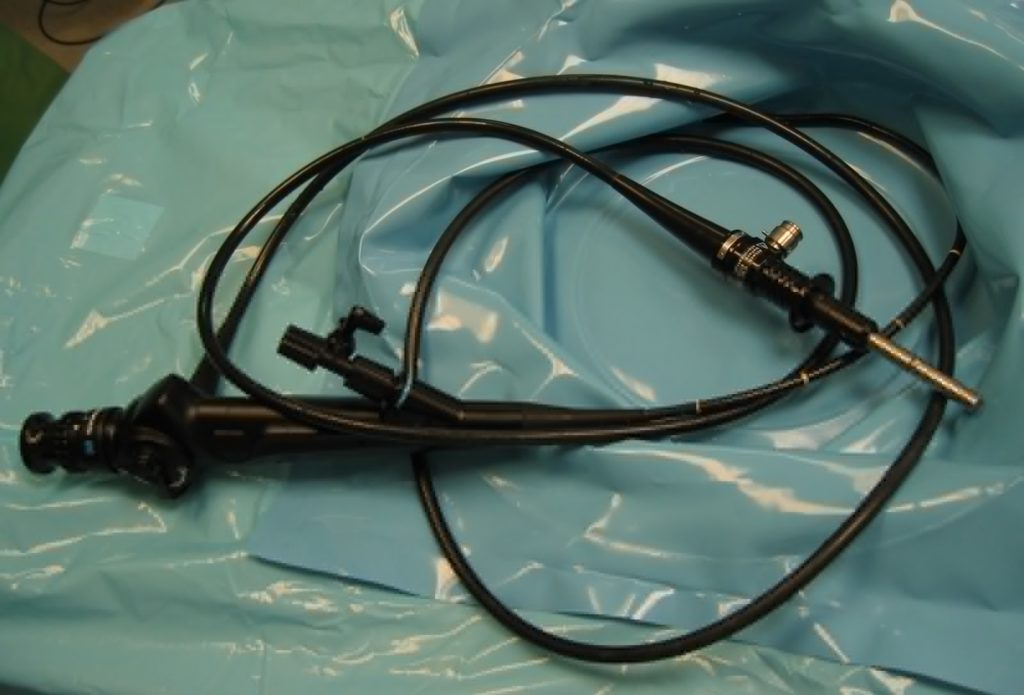
The doctor invited me to watch with him on the monitor, which I initially assumed was because I was clearly interested in everything and kept asking questions, but in hindsight I wonder if it’s just that he – quite rightly – assumed that I might have panicked if I’d have been looking in the direction of the piece of equipment he brought in and jabbed at my penis with. I only looked at it while it was on its way out, and my god its a scary-looking thing: sort of like a cross between a tyre pressure gauge and a blowtorch. The first few inches were painless – the local anasthetic had made me completely numb right up to and including the external sphincter, which is at the base of the penis. However, what I can only assume was the second sphincter complained of the discomfort, and it stung pretty sharply any time the doctor would twist the cystoscope to change the angle of the picture.
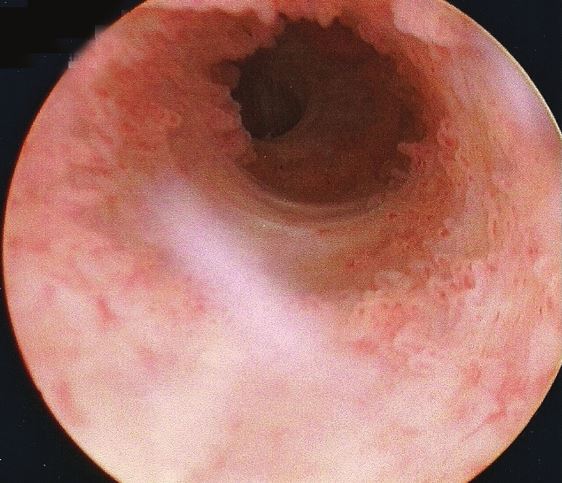
Seeing the inside of your own body is an amazing experience. I mean: it’s not amazing enough to even be worth the experience of a cystoscopy, never mind the illness that in my case preceeded it… but it’s still pretty cool. The ultrasounds were interesting, but there’s nothing quite so immersive as seeing a picture of the inside of your own bladder, gritting your teeth while the doctor points to an indentation and explains that it’s the opening to the ureter that connects to your own left kidney!
Unfortunately I neglected to take my phone into the operating room, having put it into a locker when I changed into a gown, and so I wasn’t able to (as I’d hoped) take photos of the inside of my own bladder. So you’ll have to make do with this video I found, which approximates the experience pretty well. The good news is that there’s probably nothing wrong with me, now that the infection from earlier this year has passed: nothing to suggest that there’s any deeper underlying issue that caused me to get sick, anyway!
The bad news is that while the procedure itself was shorter and more-bearable than I’d expected, the recovery’s been a real drag. A week later, it still hurts a lot to urinate (although I’ve stopped yelping out loud when I do so) and my crotch is still too sore for me to be able to cycle. I’ve also discovered that an errection can be painful enough to wake me up, which is definitely not the most-pleasant way I’ve been roused by a penis. But it’s getting better, day by day, and at least I know for sure that I’m more-or-less “right” in the renal system, now.
Quiz Kid
This article is a repost promoting content originally published elsewhere. See more things Dan's reposted.
Post-It Minesweeper
Remember Minesweeper? It’s probably been forever since you played, so go have a game online now. And there went your afternoon.

My geek-crush Ben Foxall posted on Twitter on Monday morning to share that he’d had a moment of fun nostalgia when he’d come into the office to discover that somebody in his team had covered his monitor with two layers of Post-It notes. The bottom layer contained numbers – and bombs! – to represent the result of a Minesweeper board, and the upper layer ‘covered’ them so that individual Post-Its could be removed to reveal what lay beneath. Awesome.
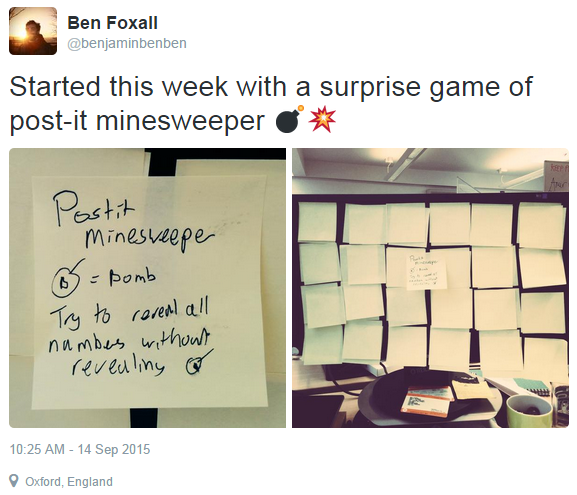
Not to be outdone, I hunted around my office and found some mini-Post-Its. Being smaller meant that I could fit more of them onto a monitor and thus make a more-sophisticated (and more-challenging!) play space. But how to generate the board? Sure: I could do it by hand, but that doesn’t seem very elegant at all – plus, humans make really bad random number generators! I didn’t need quantum-tunnelling-seeded Minesweeper (yes, that’s a thing) levels of entropy, sure, but it’d still be nice to outsource the heavy lifting to a computer, right?

So naturally, I wrote a program to do it for me. Want to see? It’s at danq.me/minesweeper. Just line up some Post-Its on a co-worker’s monitor to work out
how many you can fit across it in each dimension (I found that I could get 6 × 4 standard-sized Post-Its but 7 × 5 or even 8 × 5 mini-sized Post-Its very comfortably onto one of the typical widescreen monitors in my office), decide how many mines you want, and click
Generate. Don’t like the board you get? Click it again!

And because I was looking for a fresh excuse to play with Periscope, I broadcast the first game I set up live to the Internet. In the end, 66 people ended up watching some or all of a paper-based game of Minesweeper played by my colleague Liz, including moments of cheering her on and, in one weird moment, despair at the revelation that she was married. The internet’s strange, yo.
Anyway: in case you missed the Periscope broadcast, I’ve put it on YouTube. Sorry about the portrait-orientation filming: I think it’s awful, too, but it’s a Periscope thing and I haven’t installed the new update that fixes it yet.
Now go set up a game of Post-It Minesweeper for a friend or co-worker.
Note #7339
@OxfordBusCo issued an impossible ticket (2A doesn’t even GO to Spires) and I couldn’t return! How do I get a refund? http://t.co/NxenUySB9w
Fall off the Face
This article is a repost promoting content originally published elsewhere. See more things Dan's reposted.
Bully
This article is a repost promoting content originally published elsewhere. See more things Dan's reposted.
Review of Wriggles Brook Gypsy Wagon B&B
This review originally appeared on TripAdvisor. See more reviews by Dan.
Beautiful site, even in the rain, and amazing home-cooked food.
My partner, her toddler and I spent two midweek nights in August in the larger “Showman” caravan to celebrate our anniversary. In a long field that twists its way alongside a babbling brook, the owners have set up a trio of traditional horse-drawn caravans, each in a wooded clearing that isolates it from the others. Two of the caravans are smaller, designed just for couples (who are clearly the target market for this romantic getaway spot), but we took the third, larger, (centenarian!) one, which sported a separate living room and bedroom.
Wriggles Brook combined a beautiful setting, imaginative and ecologically-friendly accommodation, and about a billion activities on your doorstep. Even the almost-complete lack of phone signal into the valley was pretty delightful, although it did make consulting Google Maps difficult when we got lost about 20 minutes out from the place! But if there’s one thing that really does deserve extra-special mention, it’s the food:
Our hosts were able to put on a spectacular breakfast and evening meal for us each night, including a variety of freshly-grown produce from their own land. We generally ate in their mini dining room – itself a greenhouse for their grapevines – but it was equally-nice to have pancakes delivered to the picnic table right outside our caravan. And speaking as somebody who’s had their fair share of second-rate veggie breakfasts, it was a great relief to enjoy a quite-brilliant variety of vegetarian cuisine from a clearly-talented chef.
More photos and an extended review can be found on my blog: https://danq.me/2015/08/29/anniversary-at-wriggles-brook/
Date of stay: August 2015
Room tip: “Showman” caravan is larger and most-distant from the path, if you’re looking for privacy (although all of them are quite well-isolated).
Trip type: Travelled with family
Review of Macdonald Bear Hotel
This review originally appeared on TripAdvisor. See more reviews by Dan.
Spacious, professionally-run hotel, but very hot in the summer!
My partner and I spent a night here at the tail end of a mini-break to celebrate our anniversary. Our ground-floor room was clean and spacious and conveniently-placed for the car park and the bar served a delightful selection of cocktails. Unfortunately we were there on one of the hottest days of the year, and the rooms aren’t equipped with air conditioning: even with the windows wide open and a fan running, it made for an uncomfortably hot night!
Date of stay: August 2015
Room tip: In summer, ask for a North-facing room to minimise the temperature: there’s no air-con!
Trip type: Travelled as a couple

